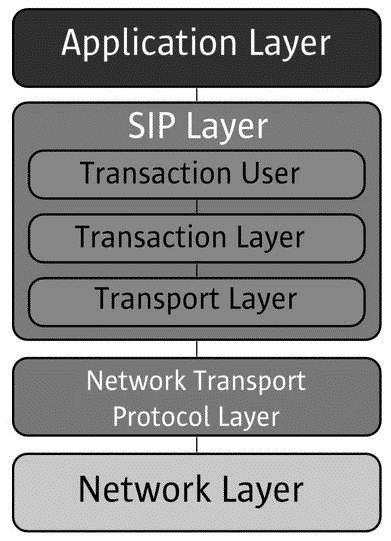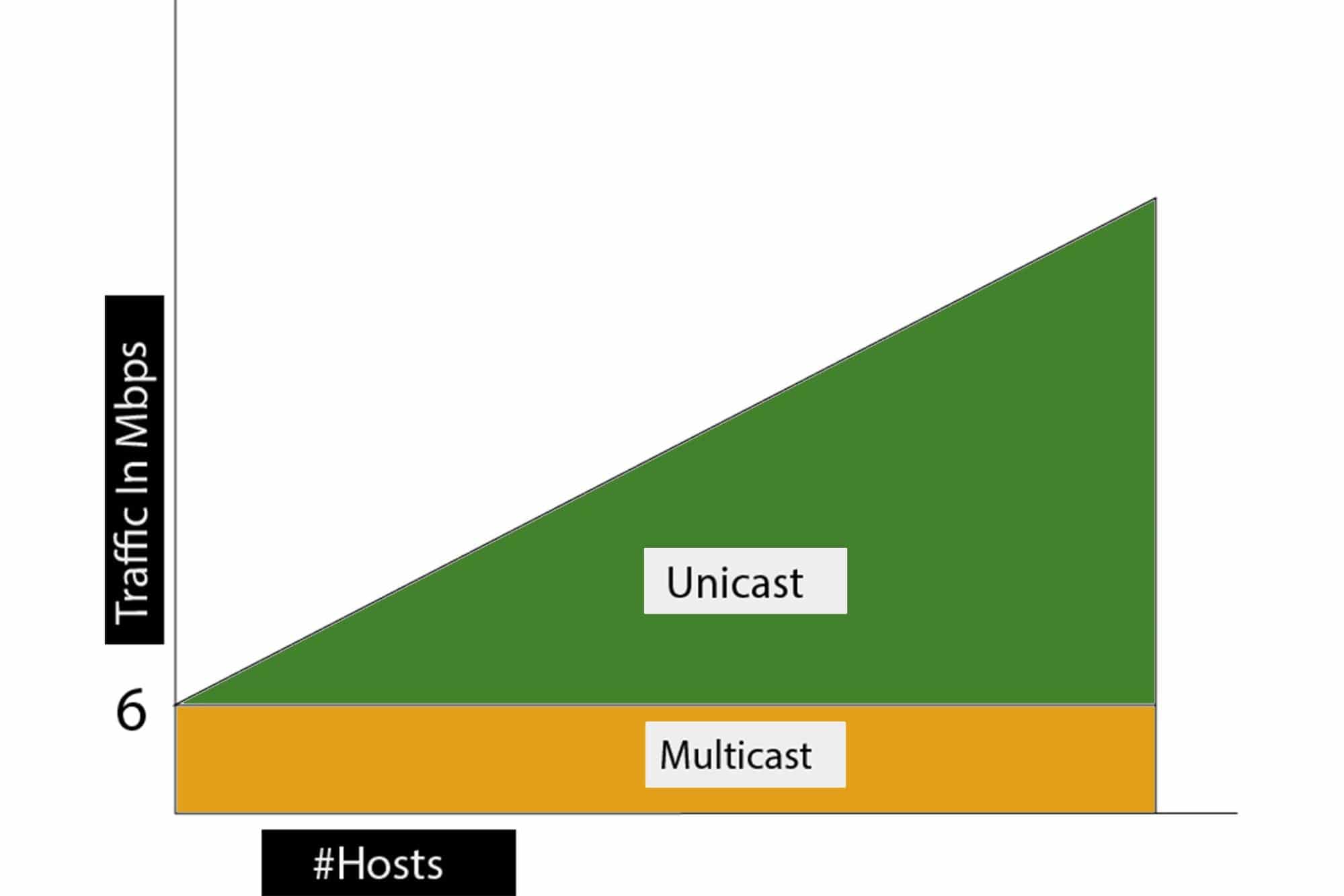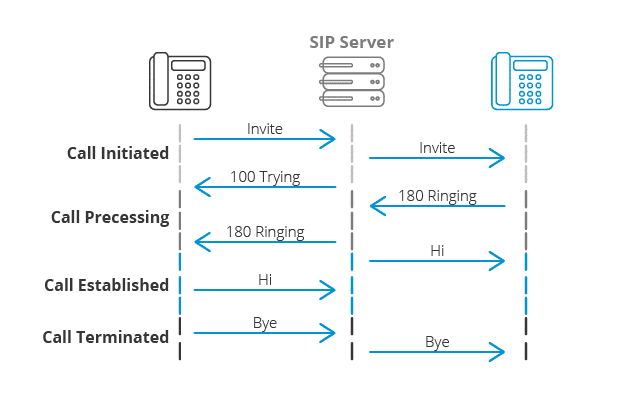Sessions Initiation Protocol (SIP) allows you to send and receive message, voice and video calls, and media between two or more devices. It can be used for VoIP services, as well as other types of media streaming, like conference calls and telehealth.
Session Initiation Protocol (SIP) is an internet protocol to create, modify, and end telephony and multimedia distribution between two or more endpoints.
SIP makes it possible to send messages, make phone calls, or do video calls between two endpoints over the internet. Endpoints, in this case, would be smartphones, laptops, tablets, or any device that can send and receive multimedia messages over the internet (even an Xbox).
SIP acts the same way the old telephone network used to operate when it used operators and switchboards in the late 1800s. If you wanted to call someone, you gave a phone number to a human operator, who used a switchboard to connect you to that person. In this case, SIP is the operator. You give SIP the address of who you want to call and it connects you to them.

SIP is an application layer protocol that helps guide data between different systems. (Source)
SIP works as an application layer protocol that dictates how messages are passed between different systems. The specifics of the protocol were defined by the Internet Engineering Task Force (IETF) as RFC 3261.
Typically, SIP makes use of Session Description Protocol (SDP) to establish media type and parameter negotiation. However, it was designed to be protocol agnostic, so it can be used with:
- User Datagram Protocol (UDP) – A message-oriented internet protocol that is often used for voice and video calling. Message-oriented protocols send data in chunks that needs to be segmented into streams in the application layer.
- Transmission Control Protocol (TCP) – The backbone of the internet. TCP is a connection-oriented protocol that requires a connection between both server and client to work.
- Stream Control Transmission Protocol (SCTP) – A message-oriented protocol similar to UDP, but with a higher level of stability.
Because you’re not locked into a single protocol with SIP, it’s incredibly flexible. You can easily integrate it into an existing platform without having to modify the internet protocol you’re using.
Where is SIP used?
SIP can be used anywhere you need to establish a connection to send messages or make voice or video calls. It’s a way of facilitating human to human conversations and allows you to use unified communications platforms that integrates with speech to text functionality, as an example.
This could be anything from in-app messaging between two people in a video game on your phone, to conference calls on your computer.
Depending on your use case, SIP can operate with either multicast and unicast streams.
Unicast streams send an individual data stream out to each host that requests it. Netflix and YouTube are two of the best known examples of a unicast streaming platform. Unicast requires additional bandwidth for each stream, but multicast simply continues to split the stream among users. The more users on multicast, the more the stream is split.
Multicast streams, on the other hand, send out a single stream that is split up and sent to each of the hosts that request it. Multicast streams scale better than unicast because it sends out a single stream for everyone, as opposed to one stream for each user. Despite being a more efficient streaming method, multicast isn’t as widely used. An example of what this looks like would be sending an email to a mailing list. You send one email and it goes out to everyone on the last.

Scalability of using multicast streams in comparison to unicast streams in terms of the relationship between the number of hosts and traffic in Mbps (Modified from Source).
Setting up voice and video calls with SIP
The first thing you need to do to use SIP is an address or an account from an online provider, like GetOnSip, IPTel, or Ekiga. This acts as your phone number or email address and lets people connect to devices using SIP.
Next, you need a SIP client to connect to other SIP users, this is essentially your phone.
After you get a client, it’s simply a matter of configuring it and connecting to whoever you want to call.

What the process of establishing a SIP call looks like. In this case, the end point are SIP-based phones. (Source)
SIP vs. VoIP
It’s worth noting the differences between SIP and VoIP (Voice Over Internet Protocol) technology. Both are protocols that allow you to communicate with other people.
The big difference is that VoIP is a protocol for using voice over the internet. SIP, on the other hand, allows you to send any kind of media across the internet between endpoints. This includes voice but also allows you to send messages, videos, and pictures.
The two can be used together, with VoIP as the method of communication and SIP providing the means of communication. But VoIP doesn’t exclusively rely on SIP to work.
How you can use SIP in your applications (and a real world example)
SIP can be implemented as an out of the box solution, DIY, or with a telephony API that will allow you to detect intent, sentiment, action items, questions, ideas, and more. And, best of all, it can be done in real-time or asynchronously.
As an example of what this looks like, there’s Linphone, an open-source VoIP provider, that operates using SIP. Their technology can be used out of the box as a VoIP platform to make voice and video calls between endpoints like a smartphone or computer.
You can also use it to create custom systems like telepresence solutions for healthcare providers, conference calling services, and Linphone can even be integrated into video door monitoring systems.
By integrating a telephony API into a SIP platform, you gain the ability to:
- Monitor conference calls, either in real time or after the fact.
- Transcribe meetings and calls
- Pull actionable information out of internal or sales meetings, like follow-ups or next steps.
- Analyze sales calls to determine what works best and why.
To learn more about SIP and its uses, check out our additional resources below.
Additional Reading
- How SIP is Used in VoIP
- SIP Protocol: Definition
- What platforms are compatible with your SIP phone?
- What is Unified Communications?
